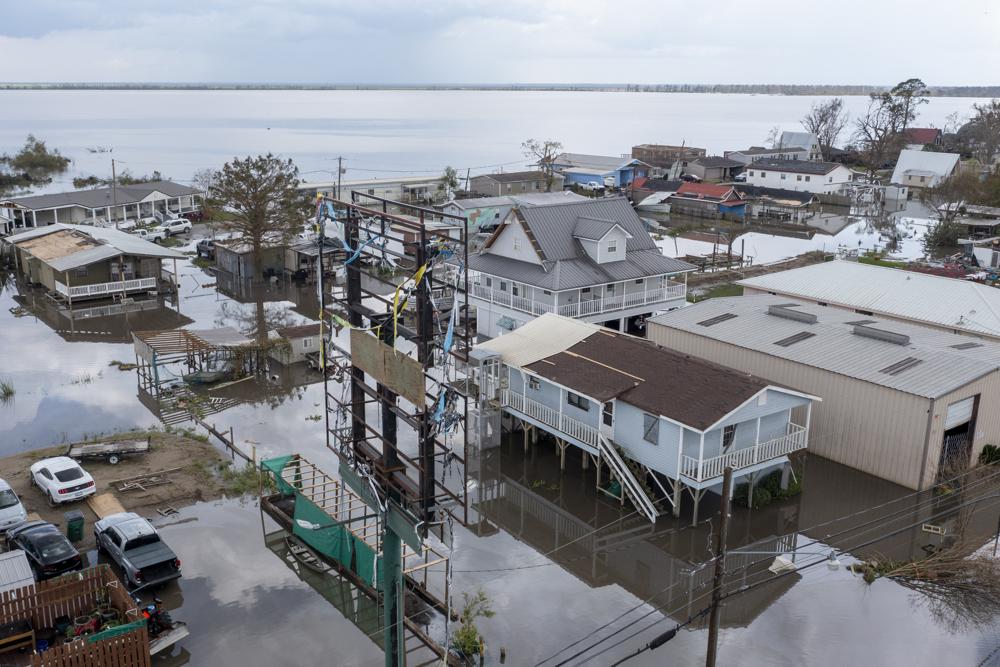[ad_1]
PA
The enhanced U.S. flood insurance program, which goes into effect this month, charges fees that the federal government says better reflect housing risk.
The Federal Emergency Management Agency says the new program means low-cost homeowners no longer subsidize the flood risk of more expensive waterfront real estate.
“It’s a matter of fairness,†says Craig Fugate, former FEMA administrator under President Barack Obama. “People should pay what their risk is.”
The FEMA program is often the only flood insurance available in areas vulnerable to hurricanes and heavy rains, such as the Gulf of Louisiana. The agency writes insurance policies that homeowners can purchase through a private insurance company.
A new pricing method, known as Risk Assessment 2.0, will go into effect Friday against the new policy. Existing policyholders will change in April, but future policyholders can request lower rates immediately.
How are the new programs different?
It takes more variables into account to determine a home’s flood risk.
Previously, charges were primarily based on the elevation of the property and whether it was built in a designated flood zone. FEMA defines a flood probability of 1% in any given year. However, many experts point out that many communities affected by the recent hurricanes were not in these areas and said they did not accurately grasp the flood risks.
The new program takes into account various types of flooding that can damage property, such as river overflows, storm surges, coastal erosion and heavy rains, as well as the distance between homes and water sources. .
Another novelty: the estimated cost of reconstruction after a disaster. Small homes are cheaper to replace, so FEMA says the changes lead to fairer prices.
Who will be affected?
About 3.4 million single-family homes have policies under the FEMA program, which also serve businesses and lessors. The average annual premium is $ 739.
The new program will reduce rates for approximately 625,000 homeowners. This is unprecedented in the program’s more than 50-year history. According to FEMA, the rest of the fees will be about the same or higher. The increase is limited to 18% per year.
Most rate hikes in the first year do not exceed $ 120, but about 3% of the policy exceeds $ 240 and continues to rise until the plan’s new price target is met.
However, the total cost of a single family owner can no longer exceed $ 12,125. It is the upper limit that may reassure some people. Previously, the highest premium was $ 45,925.
The most significant changes are observed in the coastal areas of California, Florida, Louisiana, New Jersey, New York, South Carolina and Texas.
Among the hardest hit areas is the vast Harris County of Texas, which was badly damaged by Hurricane Harvey in 2017, including Houston. In Louisiana, changes are observed in New Orleans and the surrounding area recently affected by Hurricane Ida.
Who will see the rate jump?
A relatively small number of policyholders will experience a significant increase. But for those who do, the leap can be significant.
John Case, co-owner of Case & Vivien Insurance Agency, Lowry-Dunham, Louisiana, said an insurance policy for the duplex he checked would ultimately go from around $ 625 to over $ 4,500 per year. to augment.
“The seriousness of this situation has not yet been resolved and we hope it will be reconsidered,” said Case, who said flooding is a very high risk and therefore to the insurance principle of the federal program. . He added that subsidies are needed. He says he’s lost in the new pricing method.
Joel Sukata, a water and climate lawyer for the Natural Resources Defense Council, said more precise tariffs lead to more informed development decisions. He says FEMA’s old approach hid the true cost of flooding.
“If you don’t know the risk of flooding, you can’t take steps to protect yourself,†says Scata.
How do homeowners know if the rates are going to change?
FEMA has so far only released information on price changes for the first year and has not disclosed the final total cost of the policy.
Communicating with your insurance broker is the best way to find out how your changes affect new policies or updates.
“It’s a good idea to contact the agent now and say, ‘What can we expect to plan ahead? ..
Homeowners can also visit FEMA’s floodsmart.gov site for general information about the program, what the program is about, and how to purchase insurance.
Has anyone opposed the change?
A bipartisan group of senators representing coastal states expressed concern about the change, saying some policyholders could be infiltrated and at risk if interest rates were too high.
Homeowners outside of the designated flood zone often don’t need to purchase coverage, but they do. In flooded areas, if a homeowner has a federally guaranteed mortgage, they must purchase flood insurance, which many private banks also require.
[ad_2]

